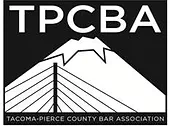News
Workers’ Compensation and Personal Injury Updates By Smith Duran Law Firm
I am getting time loss; do I need a Lawyer?
Each case varies, there are several common situations that prompt the need for an attorney. The more common situations are the following:
- If your claim is not allowed – on occasion Labor and Industries conducts investigations and likes to obtain your written or verbal statement do not agree to this without an attorney present.
- If you are not being paid time loss compensation you may need an attorney – if a doctor imposes many physical limitations or is saying you can do modified work call us to recover your benefits.
- If an injury occurred on the job but your medical treatment is denied – often times the claims manager sees your injuries in a very narrow way, if you did not include all the body parts that bothered you on that initial appointment they may contest any other treatment. Call us to obtain the medical treatment you deserve.
- If you cannot physically do your light duty job – your employer must respect the physical limitations imposed by your doctor, if this does not occur your communication your doctor is key. Call us to guide you.
- If you are thinking about retiring prematurely due to your injuries – many times people give up their benefits because they are “close to retiring” or even drawing social security. Contact us for a free consultation before you apply for retirement. We can guide you to make the best decision for you and your loved ones.
- If you are retraining and your physical or mental condition worsens – If you are failing your retraining plan the Department may send you a letter saying you are not cooperating and may end your time loss checks. Before this happens call us.
- If you were released to work on a job you have never done before – you can appeal some determinations to the Vocational Dispute Resolutions Office (VDRO). This is time-sensitive and you must meet with an attorney immediately. Call us.
- If your claim closed without compensation – many times you are sent to an independent medical examiner who closes your claim without any compensation, although not every injury leads to compensation we can help you determine if you should have been compensated.
- If your claim closed but you need more treatment – you need to appeal the claim closure and prove you need more treatment using “objective medical findings” this means you need a doctor to testify on your behalf. Call us to appeal your claim closure.
- If you are looking to reopen your claim – to reopen your claim you must prove a worsening of the approved conditions. This can be very technical if you have tried to reopen your claim before and failed. Call us.
- If you have been to multiple “Independent Medical Exams” in a short amount of time – Staking IMEs is a way the Department or Self-insured employer uses to limit, delay, or cut-off.
Benefits on Appeal and Penalties
When a worker is awarded benefits by order, the check must be sent promptly. If it is a permanent partial disability award (PPD) at claim closure, the first payment must be made within 5 days of claim closure (date of order) even if the self-insured or the employer appeals. If the employer wants to stop the payment stream, the employer must appeal to the Board of Industrial Insurance Appeals and ask for a stay of benefits. RCW 51.52.050(2). The worker has a right to oppose this. This is a very deadline-intensive, quick turnaround process, generally completed within 25 days.
There are some exceptions to these rules. For example, if the claim is closed with category II permanent partial disability award, and the worker protests and submits evidence to support a category III, the employer only has to pay the category II award while the issue is examined; but the employer may not simply cease payment. If a wage order is set and time loss is paid, but the worker challenges the accuracy of the wage order, the employer must pay time loss at the initial rate, subject to repayment if the higher rate is approved. The employer may not simply cease payment.
Benefits include more than money; benefits include vocational services, payment for mileage, and payment for medical treatment.
The Department will order the self-insured employer to pay penalties if the benefit payment is unduly delayed. The worker must file a request for penalties in writing with their claims manager, detailing the lapse of duty.
Independant Medical Exams
The Labor and Industries law permits the claims manager to have the injured worker examined by “Independent Medical Examiners” to get medical opinions on such issues as the appropriate course of treatment, whether the worker has reached maximum medical improvement, whether the worker has limitations which would impact the ability to perform a particular job (job of injury, transferable skills job, vocational retraining job goal), and to determine whether the worker has permanent impairment from the injury. The worker is obligated to attend; failure to attend can result in penalties, such as an order requiring the worker to pay for the cost of the IME, delay in claim processing, and eventual claim closure. The worker has a right to have a person accompany them for any IME except a psychiatric IME. It is very important to take a witness. The IME examiners must file their report within 15 days with the Department. It may be sent to the attending physician, but this is not a requirement. It is not mailed to the worker, but it is available to view in the worker’s claim file online. Read it.
There are approximately 400 doctors who have applied to be and have been accepted as Independent Medical Examiners. The doctors must be board certified. If the exam is inappropriate, a written complaint can be filed with Carole Britton at the Department of Labor and Industries. The Department investigates the examiners and can suspend IME examiners who do not follow DLI’s rules, including respectful behavior to the examinee.
The assignment letters to the IME doctors are available for your review in the online claim file; the claims manager lists the issues which the IME doctors are expected to address. Sometimes the claims managers provide factual information.
It is typical for the claims manager to take action based on the IME.
There is a great deal of skepticism in the worker community about whether these exams are truly “independent.” To many workers the examinations seem brief and cursory. Some doctors are philosophically skeptical of injured workers. The doctors look for inconsistencies, exaggerations and red flags. There are videos which can prepare you for a typical exam. Go prepared to answer honestly but not effusively; take a witness and review the assignment letter and the report for inconsistencies and errors. Try to set an appointment with your doctor to review the report before claim closure. The system is designed to get your doctor to concur with the IME. The typical letter to the attending physicians gives them two choices: “I concur” and “I do not concur.” The exams themselves usually have several different issues, and it is often the case that the blanket “I concur” buries differences of opinion on a critical issue, such as whether a worker can perform a particular job duty.
The process for medical exams in personal injury cases is somewhat different. While the examiners may be the same doctors and while the actual exam may be similar, there are significant differences. In personal injury cases, the opposing party does not have a right to have you examined unless either an agreement is reached or a court order is entered detailing the parameters of the examination. However, with DLI cases, the Department or self-insured has a right to have the worker examined by a doctor of their choice.
Is the On-the-job Injury covered by L&I?
Employers and workers both often misunderstand what injuries or conditions are covered by L&I. Some of those misunderstandings are:
I’m a contractor, not an employee. Just because the worker is called a contractor, the injury still may be covered by L&I. L&I has a test which includes whether the “employer” controls the time and manner in which the “contractor” perform your job, in addition to other tests. When in doubt, ask a lawyer who practices in the area of L&I.
There was no “injury.” L&I covers on-the-job injuries (sudden traumatic events) but it also covers occupational diseases and conditions arising from repetitive activity. When in doubt, ask. Do not assume that the employer or your doctor has the correct information. Occupational condition is a relatively young concept and is evolving; the rules change.
This same body part was hurt before. Pre-existing conditions do not prevent the injury from being a legitimate L&I-covered injury or occupational disease with appropriate benefits. If a new incident has occurred, the worker will typically be given a new injury claim number; the worker does not have to reopen the old injury claim.
I was off the employer’s premises. If you are “in the course of employment” when you are injured, it should be covered by L&I even if it occurs off-premises. There are also many laws, regulations, Department policies and court cases that define whether or not the injury condition qualifies as an injury, a repetitive stress injury, or an occupational disease. An injury is a sudden traumatic event. A repetitive stress condition occurs over time, such as carpal tunnel. An occupational disease is more complex and requires a detailed examination of the worker’s job history with specifics about each job and job duties. If your claims manager asks you to complete an Occupational History questionnaire, spend time on it because that could make the difference between having your claim accepted and having it rejected. If in doubt, ask an attorney who practices in this area.
Medical Provider Network (MPN)
Traditionally, workers have a right to select their own medical provider for their covered injury. This changed in 2011 when the legislature, in a last-minute bill substitution created the Medical Provider Network for injured workers. Beginning in January 2013, a worker could see any provider for the initial visit, but ongoing care had to be through a medical provider who had been accepted by DLI’s Medical Provider Network. The MPN requires the doctor to follow the Department’s medical treatment guidelines, which are published. For example, the Department has a list of symptoms and treatments which must be satisfied before an injured worker may be treated with cervical fusion surgery. The Department adopted restrictive opiate guidelines in July 2014, which provide that doctors can prescribe opiates only for post-surgical pain for 6 weeks absent special circumstances. Doctors can be removed from the network if they do not follow DLI guidelines.
Workers need to be aware that, even with the MPN, they still have a choice in their selection of medical providers. Even where the employer is self-insured, the worker has a right to select a provider, and no reasonable request may be denied (subject to the requirement that the doctor is enrolled in the MPN). Workers who are taken by their employers to a particular provider are NOT obligated to continue treatment with that provider. Even workers who are covered by a managed care plan, such as Group Health, have the right to select a doctor outside the Group Health network, so long as that doctor is in the MPN.
Structured Settlements (CRSSA)
Structured settlements are offered to some older injured workers. It is basically a buy-out of the worker’s retraining cost and/or pension costs, but always at a steep discount. The program was designed to be an alternative to putting an injured worker through a vocational retraining plan and possibly onto pension. The legislative goal was to save retraining and pension money. However, this benefit is not limited to vocational candidates or pension candidates.
Originally designed for injured workers 55 and over, it will be available to those 53 and over as of January 1, 2015; the age drops to 50 on January 1, 2016. The injured worker’s claim must have been allowed by the Department and must be at least six months old. The request for a structured settlement can be imitated by the worker, the Department, or the employer. The worker must provide an extremely detailed amount of information including information about sources of income, assets, debts, and investments of both themselves and their spouse or partner, as well as medical information including unrelated conditions. The plan must be deemed to be in “the best interest” of the worker; the Department must approve the plan, and it must also be approved by the Board of Industrial Insurance Appeals. The big question will always be how much money will the Department pay? The Department has its own in-house actuary to determine how much money to set aside to fund a worker’s pension (considering the worker’s time loss rate, social security offset, whether there is a joint and survivor benefit, the worker’s age, and generic life expectancy, the likely discount rate for the Department’s investments and the inflation rate.) Since the program’s inception, several hundred plans have been approved.
The consensus seems to be that there is no formula to determine the likely payout, other than the rough yardstick that apparently it will not be more than one-half the actuarial value of what the worker’s pension would be.
The payment is paid out over time, rather than in one lump sum. It is not a true structured settlement as they exist in the personal injury settlement realm.
Other consideration: it is possible in setting up a CRSSA to include a feature requiring the Department to pay future injury-related medical without filing a reopening application.
In my opinion, a CRSSA offers a benefit for a very few injured workers, but most injured workers are better served to go through retraining, and in some cases to move on to pension. Each CRSSA is tailored.
Tribal Enterprise Employees
Those who work for tribal enterprises face a checkerboard of tribal workman compensation plans. Some tribes, who are sovereign entities, have elected to be covered by Washington State’s Labor and Industries system, with its rights and responsibilities. Other tribes have established their own workers’ compensation plans. Of those, some offer coverage more similar to that of the state, and others have much more limited plans which can be distinctly unfavorable to the worker. The Washington State Department of Labor and Industries has no way of monitoring those workers injured and covered by tribal plans. To enable the Department to gather information on outcomes for those injured workers whose injuries are administered by tribal plans, it is necessary to ask your first medical provider to file a claim with the Department of Labor and Industries on DLI’s forms. The claim may be rejected in which case you can pursue your remedies with the tribe. This currently is the only way the Department can be made aware of injured workers and their experience, whether favorable or unfavorable, in the tribal workers’ compensation plans.
Problems Getting Mileage Paid by L&I?
Make sure you get the mileage repayment you deserve by taking the following steps: Submit a completed mileage voucher to the Department of Labor and Industries or to the self-insured within one year of the travel. For IMEs, DLI pays for the entire trip, coming and going, as well as parking and tolls, and in some cases parking or meal expenses. Documentation is required, except for parking costs less than $10.
To get reimbursed for mileage to meet with a vocational worker or to participate in a vocational plan, the worker must submit a mileage voucher signed by the vocational worker. Although the statue does not limit mileage, the Department of Labor and Industries does not pay for the first 15 miles of the outbound and the inbound trip. To get your entire mileage paid, it may be necessary to protest, then appeal. Your protest to the remittance advice (the paper document which is issued by DLI explaining what was paid) must be protested (or appealed) in writing within 60 days of when you receive it.
To get reimbursed for medical travel mileage, you must:
- get advance authorization FOR MILEAGE (not just for treatment) from the claims manager if the treatment is more than 15 miles away.
- DLI will not pay for the first 15 miles of the outbound and inbound trip.
- DLI will not pay if there are other appropriate doctors who would treat you within the 15-mile radius.If your preferred doctor is outside the 15-mile radius and you want mileage, you must make your written request to the claims manager for authorization by demonstrating no appropriate providers within that radius will provide treatment. Sometimes the key to getting mileage is calling each medical provider within the 15-mile radius to ask if that provider will take your claim.
All mileage vouchers must be submitted within one year of the trip. Forms can be downloaded from DLI. Mileage rates are changed periodically. DLI rates typically follow those set by the Office of Financial Management (www.ofm.wa.gov). WAC 296-20-1103, 296-20-125.
If your mileage request is denied, you must file a written protest or appeal within 60 days.
Workers’ Compensation Lawyers
The Department of Labor and Industries manages claims for injuries at work. You are entitled to money for lost wages, medical treatment, vocational retraining, loss of body function, and in some cases a pension.
LEARN MOREPersonal Injury Attorney
If your injury was caused by someone other than a co‑worker, an auto accident, or defective equipment, you may be entitled to additional compensation. Our personal injury attorney in Tacoma will evaluate your case.
LEARN MORE








